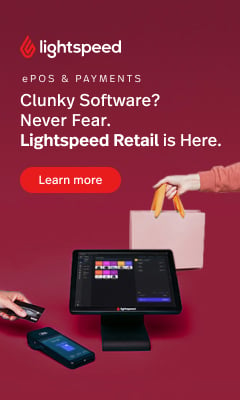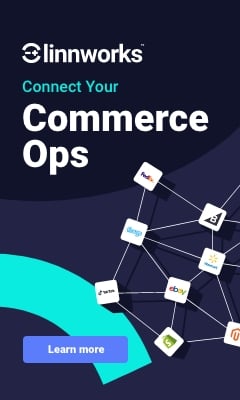Conference review: Improving the customer experience is at the heart of generating loyalty
Generating customer loyalty is not just about retailers operating loyalty programmes but is more about improving the experience for the customer whereby they want to frequently return to that merchant. By Glynn Davis
Delegates at the packed 4th Retail Bulletin Customer Loyalty conference 2013 in London this week heard about the myriad ways that the customer can be given an improved experience, which then drives greater loyalty.
Creating a customer dialogue
For Gary Topiol, managing director for EMEA at Empathica, loyalty is generated by engaging in a dialogue with customers. This is being enabled by the growing amount of customer feedback created via social media platforms that can be cultivated as a result of retailers involving themselves in the conversation.
Encouraging customers to give feedback this way can be massively beneficial as Topiol says 90% of people trust friends’ recommendations and that two out of every three people turn to Facebook for recommendations when buying a product.
Customer service and loyalty drives sales
Simon Roberts, chief operating officer at Boots UK, says it is important to take an “integrated approach to loyalty and customer care” as Boots has found a correlation between customer service and like-for-like sales.
But for maximum effectiveness he says: “All parts of the business have to be involved and every contact with the customer has to be personal.” It is the quality of the employees that he regards as the most important element in creating loyalty and that this is the driver behind why people would recommend a specific retailer to friends.
Using insight from loyalty programmes
Enhancing the customer service and loyalty at Boots is its Advantage loyalty card that Roberts says “powers all of our programmes” which has included helping to launch a new Boots No. 7 branded product. “It was purely driven from insight from the Advantage card. This data is our prime asset,” he says.
This data, and the insight it provides, is gradually being recognised by retailers as the valuable commodity that it always has been. This has been highlighted by the term ‘big data’ that has thrown the spotlight on data usage.
Dr Duncan Shaw, lecturer in Information Systems at Nottingham University Business School, says: “Big data is a new attitude to the use of data in and between organisations. It’s not to say get rid of gut feel but if you can try crazy ideas and find the ones that work and then get them signed-off in a day then this improves productivity.”
Big data for small firms
But he says it is not just applicable for large firms as even small retailers can buy-in “data crunching power and also buy extra data that helps them complete the picture”. The sourcing of data from various areas is a rising trend, according to Marcin Sobek, CRM & marketing managed services director at Comarch, who says that data from loyalty cards is being supplemented with social media interactions and feedback from customers, which all helps to better serve customers.
For Karen Glass, loyalty analyst at M&Co, this can mean triggered emails to the customer, according to their profile and associated segmentation, along with ad-hoc communications such as notifying customers of new product categories and changed opening hours.
According to Andy Wood, managing director of GI Insight, there has been an increased move to “surprise and delight” the most loyal, high spending customers with free goods and free delivery on occasion. “The spend we then get from this is very high,” he says.
Data beyond the organisation
An extension to such programmes is being developed by Visa that is attempting to overcome the issue with retailers’ loyalty cards in that they mainly give only insights based on the behaviour of the individual within the confines of that merchant.
Susan Onians, vice president of merchant loyalty at Visa Europe, says: “Classic loyalty – points-based – programmes are not working well. There are £5.2 billion of unused loyalty points/rewards and redemptions in the UK.”
She says the reality is that customers are not as loyal as retailers might think, with 20% of a merchant’s top 20 customers spending 57% of their everyday spend at competitors, and that access to the Visa universe of shopping data might help them address this issue.
Using this data, Visa is to launch later this year a points-based analytics and campaigns planning engine that retailers will be able to tap into on a pay-for-results basis that will encompass both stores and online channels.
Focus on the shopper journey
Addressing the shopping journey customers take between these two channels has been fundamental to the approach Carphone Warehouse is taking in improving its delivery of service to the customer – and enhancing loyalty in the process.
Steve Moore, head of customer experience at Carphone Warehouse, says he has wanted to move away from the company being seen as “friction” as an intermediary and instead create a conversation with the customer that helps them find the right device, tariff and carrier combination.
This has resulted in an app of the company’s paper-based catalogue that has a set of ‘rollers’ that can be locked into place as customers select the components of the mobile solution that they require. These settings can then be saved on a customer’s device and accessed in-store on the store colleague’s tablet where the conversation can be continued and the transaction potentially completed.
Moore says this solution is being developed further to also incorporate a dashboard that can show what a customer looked at first when selecting a product. This level of insight will be very useful when Carphone has conversations and negotiations with the device manufacturers and carriers.
Bringing in the human touch
The desire for one-to-one human interaction, and its enhancement through the use of technology, is a growing phenomenon, according to Alistair Niederer, chief executive of Teleperformance, who says this is despite the rise of e-commerce and m-commerce.
“As more clients get into omni-channel then it won’t be about what makes the customer buy, it will be about the customer journey and loyalty – the experience they have with the brand. We’ve gone from thinking everything was social media but this was a red herring and we’ve now gone back to recognising that the value of customer service is not about the channel but it’s about what is the preference of the customer,” he explains.
This is leading to: “A tremendous surge in the growth of voice. The value of human interaction is massive. The one-to-one conversation with the customer is through voice and web-chat and this will give a lot of loyalty.”
Even for web-based companies Niederer will suggest they sometimes call a client rather than email them or use social media platforms as this can often solve the problem quicker and it provides an opportunity to convert detractors into promoters and loyal customers.
Charity begins in the local store
Another way to create loyalty and other benefits is for retailers to link to a charity and undertake Cause Related Marketing activities. Jeremy Bliss, head of company client relations at the Charities Foundation, says: “Corporate responsibility is one driver of brand equity and customer loyalty. It can also have a huge effect on brand perceptions, employee productivity, and retention.”
This is certainly something that Sainsbury’s believes in and it has been involved with many charities over the years. Stephi Brett, community affairs manager at Sainsbury’s, says this year was the fifth time it had run its annual Local Charity scheme involving shoppers voting for a charity that their local store would then support with money and volunteered time from store employees.
This year Sainsbury’s received 100,000 paper nominations and 10,000 online suggestions, which she says was “an incredible result that showed the appetite among customers to have an involvement with us”. After a selection process, 1,250 charities were then chosen.
The result is that it “can massively affect store culture and plays a huge part in improvements in-store, with colleague engagement up and improved customer service”. This in turn boosts loyalty as Brett says it “connects with customers on another level beyond shopping”.
Don’t miss our Retail Payments Summit 19th June. Click here for details and registration.














